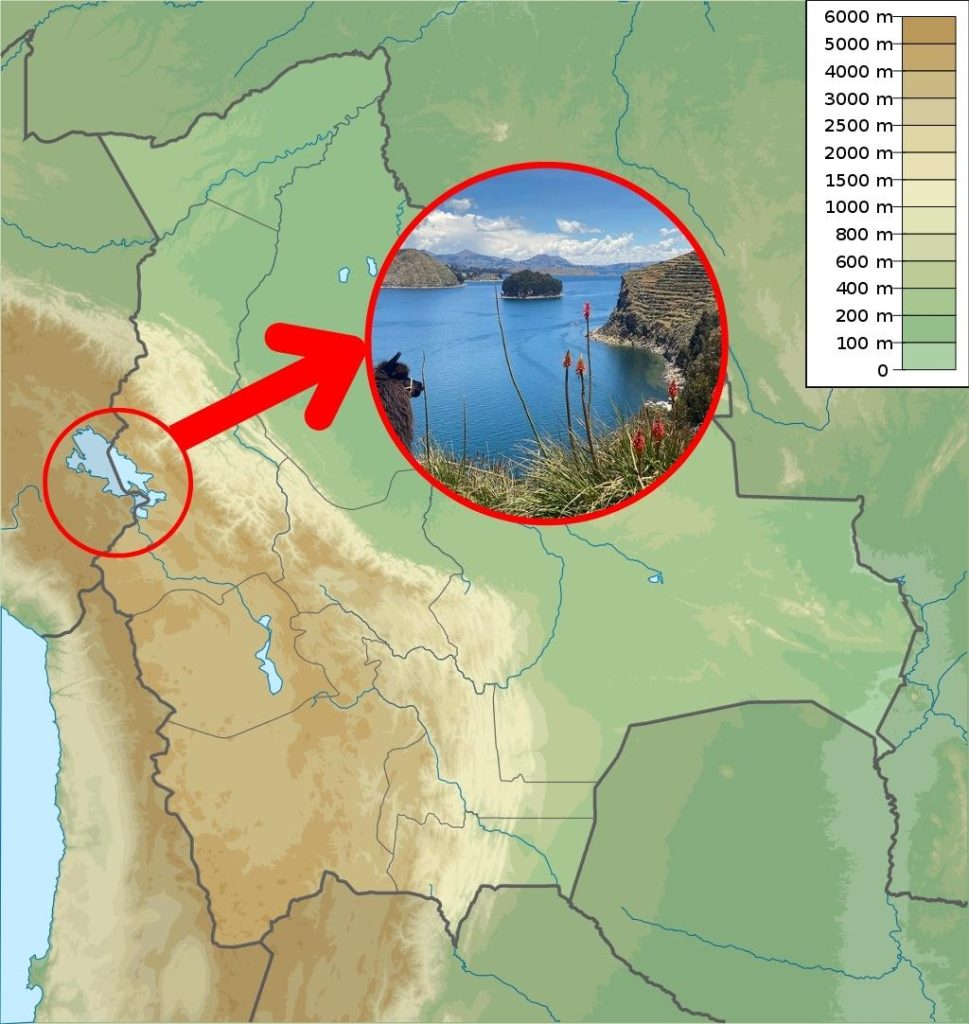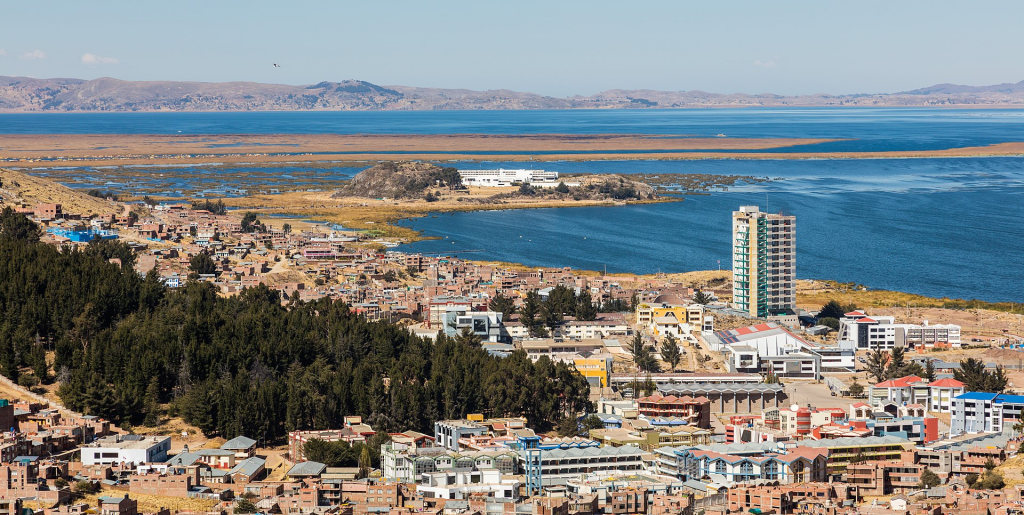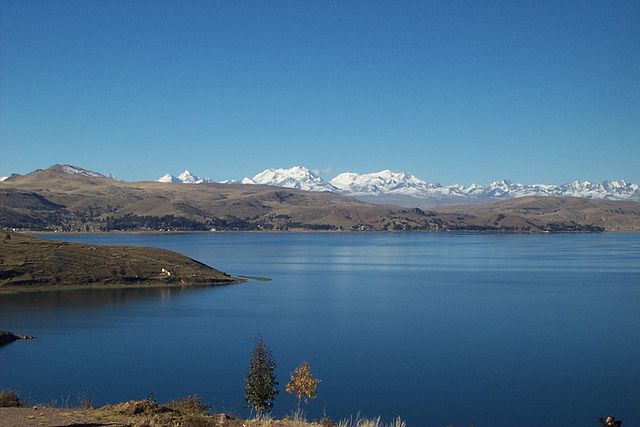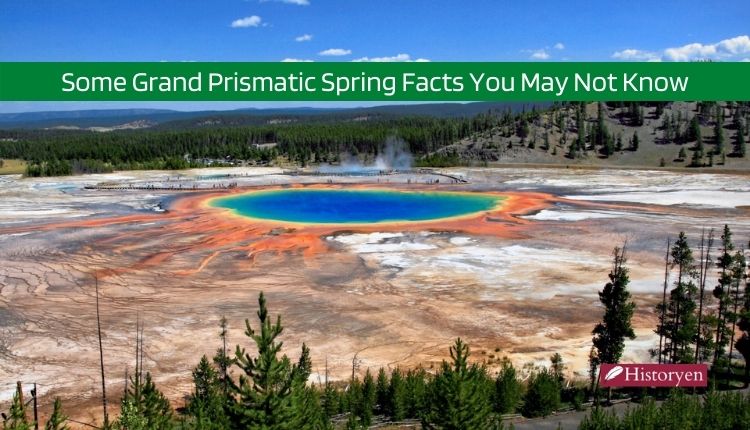Nestled high in the Andes mountains, straddling the border of Bolivia and Peru, lies Lake Titicaca, a geographical marvel that commands awe and fascination. In this article, we will embark on a journey to uncover the secrets of this remarkable freshwater lake, often celebrated as the highest navigable lake globally, boasting the largest volume of water and surface area in South America.
A High-Altitude Oasis

Lake Titicaca’s Record-Setting Altitude
At an astonishing surface elevation of 3,812 meters (12,507 feet) above sea level, Lake Titicaca earns its reputation as the “highest navigable lake” globally. This claim, however, specifically refers to commercial craft. While there are smaller lakes worldwide at higher altitudes, Lake Titicaca’s unique blend of size and altitude sets it apart.
Historical Maritime Giants
For decades, the SS Ollanta, a vessel weighing 2,200 tons, and stretching 79 meters (259 feet) in length, held the distinction of being the largest vessel on Lake Titicaca. Today, the similarly sized train barge/float, Manco Capac, operated by PeruRail, likely claims this honor.
Where Two Worlds Converge

Geographical Borderlands
Lake Titicaca straddles the border of two South American nations, with the western portion gracing the Puno Region of Peru, and the eastern shores resting in Bolivia’s La Paz Department.
Two Subbasins, One Lake
The lake’s complex structure comprises two nearly separate subbasins interconnected by the Strait of Tiquina, spanning 800 meters (2,620 feet) at its narrowest point. Lago Grande, also known as Lago Chucuito, dominates the larger subbasin, boasting an average depth of 135 meters (443 feet) and a maximum depth of 284 meters (932 feet). In contrast, Wiñaymarka, or Lago Pequeño, the smaller subbasin, exhibits an average depth of 9 meters (30 feet) and a maximum depth of 40 meters (131 feet). The lake’s overall average depth stands at an impressive 107 meters.
Lifelines: Rivers and Streams

Nature’s Gift
Five major river systems, Ramis, Coata, Ilave, Huancané, and Suchez, generously feed into Lake Titicaca. Additionally, over 20 smaller streams contribute to its life force. The lake’s intricate ecosystem thrives on this continuous flow of freshwater.
A Monomictic Marvel
Unique Circulation
Lake Titicaca boasts a single season of free circulation, a phenomenon known as monomictic. Water travels through Lago Huiñaimarca and exits through the Río Desaguadero, flowing southward into Bolivia’s Lake Poopó. Remarkably, this natural process only accounts for approximately 10% of the lake’s water balance. The remaining 90% is balanced by evapotranspiration, driven by fierce winds and intense sunlight at its high-altitude home.
Challenges and Conservation
Receding Waters
In recent years, Lake Titicaca has faced a concerning issue – constantly receding water levels. Between April and November 2009, the water level plummeted by a staggering 81 centimeters (32 inches), reaching its lowest point since 1949. This decline is attributed to shortened rainy seasons and the melting of glaciers that feed the lake’s tributaries.
Environmental Threats
Beyond diminishing water levels, pollution poses a growing menace to Lake Titicaca. Rapid urbanization in the surrounding areas sometimes outpaces solid waste and sewage treatment infrastructure. According to the Global Nature Fund (GNF), pollution and the introduction of new species by humans endanger the lake’s biodiversity. In 2012, the GNF designated Lake Titicaca as the “Threatened Lake of the Year.”
Conclusion
Lake Titicaca, perched in the lofty embrace of the Andes, is a testament to nature’s grandeur and fragility. Its record-setting altitude, complex geography, and unique ecosystem make it a subject of fascination and concern. As we marvel at its beauty, let us also strive to protect this extraordinary treasure for future generations.



